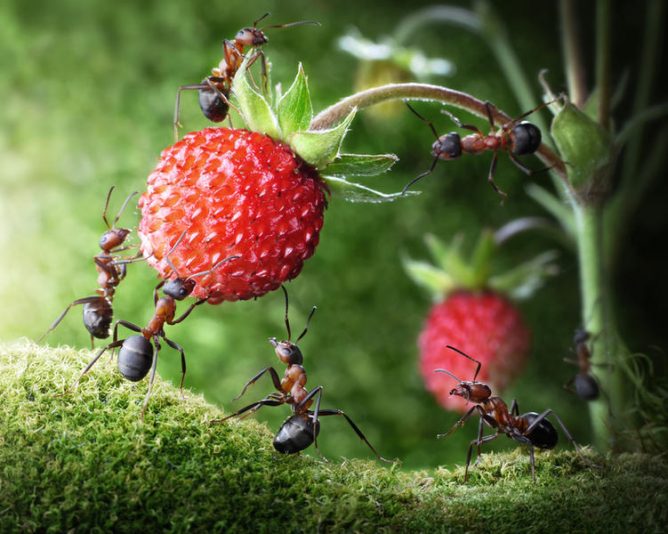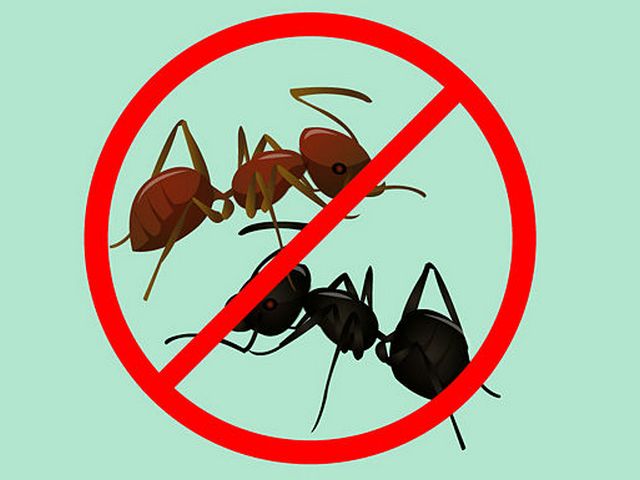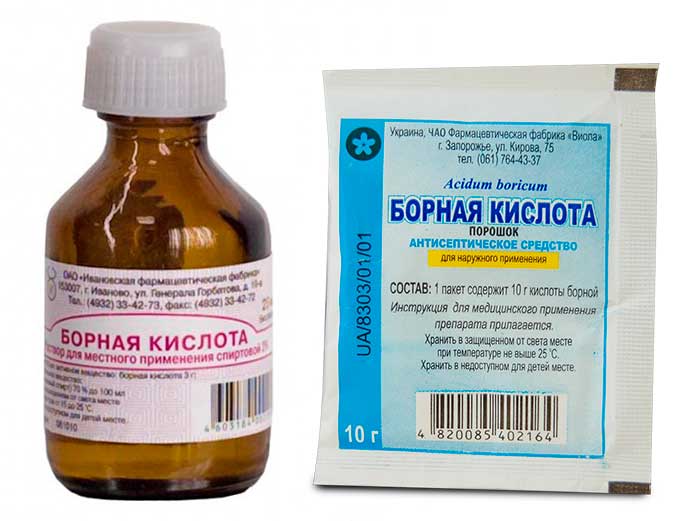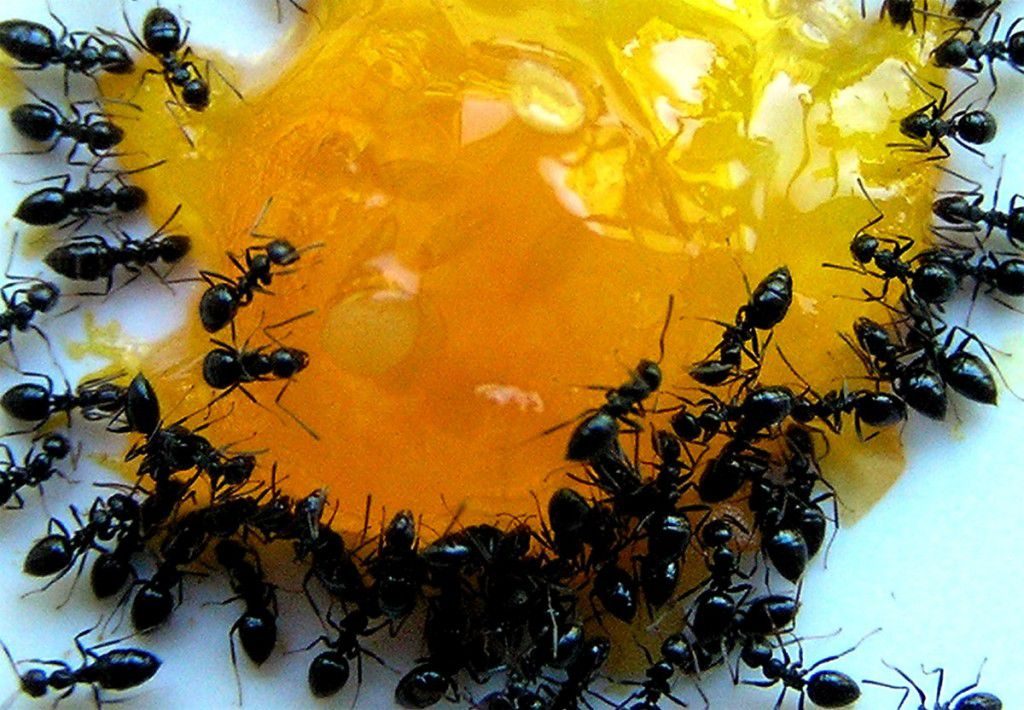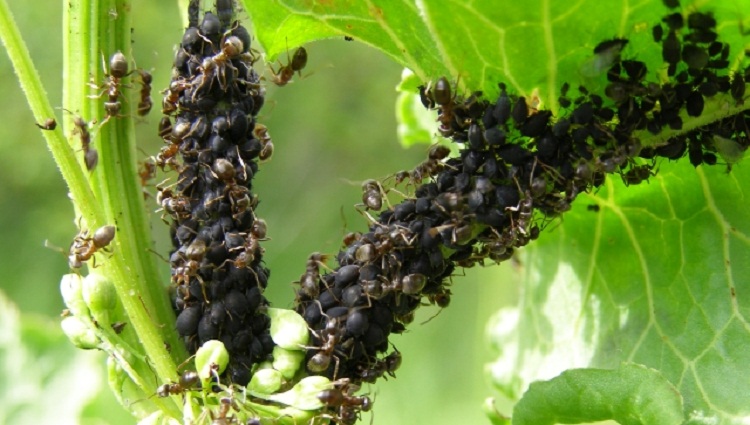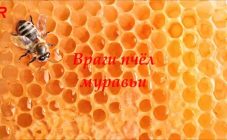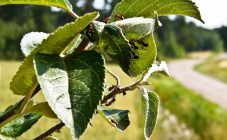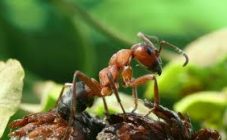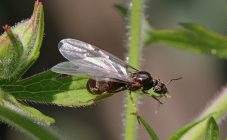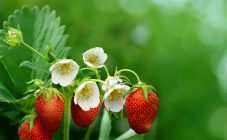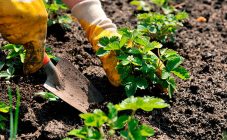Content:
The ants that have settled on the site are pretty annoying to summer residents. They, like radiation, penetrate everywhere, and in the first place, garden and garden plantings suffer from them. The worst part is when the ants eat strawberries. Even experienced summer residents often do not know what to do in this case.
Ants in the country - benefit or harm
On the one hand, the colony of insects that have chosen the summer cottage speaks of the high quality of the land: it warms up well and evenly, is saturated with oxygen, the lower layer is sufficiently moisture-absorbing.
Statistics states that the average population of ants is capable of destroying about 2000 caterpillars, midges, slugs or their larvae and eggs in just one day. Laying passages and tunnels in their underground kingdom, ants help to improve the structure of the soil, saturating it with air, beneficial bacteria and moisture to a depth of one and a half meters.
The activity of garden ants doubles the content of readily soluble potassium compounds in the soil, and tenfold phosphorus.
Together with the benefits, the hard workers-ants harm the dacha economy:
- the secret they release increases the acidity of the soil;
- for the construction of underground palaces, the most inappropriate, from the point of view of the summer resident, places with loose, ennobled soil, as a rule, in the beds are chosen;
- they are big sweet tooth: they eat carrots and pumpkins, flower buds, berries;
- the diet of ants includes thin, tender roots of seedlings, small seeds;
- they diligently settle aphids, the sweet excrement of which they feed on.
Do ants harm strawberries?
Here the answer is unambiguous: despite the benefits of the site, they harm the berry bushes. In addition to acidifying the soil, ants settle aphids that feed on plant juices. Arranging anthills in areas with berries, they choose not the aisles, but the beds themselves. Where bushes grow, it is cozier there, their dwelling will not suffer from cats-dogs, who often dig into the cultivated land. Birds will not notice them under large leaves, and food is always nearby - delicate roots, flower buds. In addition, ants willingly eat strawberries, gnaw delicious berries no worse than slugs.
Therefore, having discovered a settlement of ants in strawberry beds, the summer resident is doing everything possible to remove the pest.
How to save strawberries from ants
Many years of experience in growing strawberries in summer cottages offers a wide range of pest control measures: from humane, without unnecessary sacrifices, to radical ones aimed at destroying anthills along with its inhabitants.
What to do first
First of all, the scale of the disaster is assessed.If ants just use strawberry plantings as a dining room, it will be enough to use deterrents. If they settled in the beds, more stringent measures will be required: from forced eviction to measures to destroy the enemy.
Eviction is considered the most humane way. It is carried out as follows:
- The best time for the event is from 6 pm to 10 am, when the foraging ants have not yet returned to work.
- A metal bucket is prepared, the inner walls are coated with oil.
- An anthill is dug up with all its contents (pantries with supplies, eggs, larvae) and placed in a bucket.
- In the nearest meadow or wasteland, the ant colony is poured out.
- The place where the anthill was is carefully sprinkled with ash.
The procedure is effective if the anthill is located between the rows. If ants are in the strawberries, what to do with their settlements at the base of the bushes is a more difficult task.
How to get rid of folk remedies
Folk remedies that can protect the beloved berry from the invasion of ants are gentle with the plant, but they can be merciless to the enemy, although the struggle will be long.
Boric acid
A poisonous bait is prepared from a pharmaceutical preparation according to one of two recipes: half a teaspoon is diluted in a glass of water, 3-4 teaspoons of sugar are added; for a matchbox of powder (borax) take 1 tbsp. a spoonful of honey, half a glass of water and the same amount of sugar.
The poisoned delicacy is laid out on small plates or jar lids, placed next to the anthills.
Yeast
Needed by humans and plants as a source of nutrients, yeast for ants is a slow death. They are mixed fresh with jam, sweet syrup or honey until smooth and laid out on ant paths.
Sweet traps
Old jam, artificial honey, stale sweets lure ants. They are laid out next to the ant paths, the stuck insects are periodically drowned in a strong saline solution. The measure restrains the increase in the number of helper pests.
Scary smells
Plants with a pungent odor successfully scare off ants. Along the perimeter of the plot or beds are planted: medicinal tansy, bitter wormwood; useful in all respects lavender, mint, marigolds; garlic, parsley needed in the household.
The branches of such plants are also laid out next to the bushes, regularly renewing.
The aisles in early spring or autumn are sown with white mustard - a siderat that helps to protect the berries from insects.
The treatment of anthills located on the beds with liquids helps to save the planting:
- 30 g of linseed oil, 5 g of baking soda per 1 liter of water;
- steep boiling water;
- vegetable oil.
Boiling water is used carefully so as not to damage the root system of the bushes. Anthills are pre-rattled.
How to deal with ants with insecticides
Often, summer residents use "chemistry" to combat the pest - industrial insecticides, which include substances that poison ants. The five most popular are:
- Ant-eater. An aqueous solution of the substance is poured over the stirred up anthill.
- Muravyin - bait with poisonous substances, acting on other insects living on the surface of the earth.
- Muracid for processing anthills or making baits.
- Thunder-2 - ready-to-use microgranules, which are embedded in the soil at a shallow depth.
- Summer resident - bio-spray based on essential oil plants, completely safe to use. Completely non-toxic, can be used at any stage of the growing season.
Chemicals are not used on flowering and fruiting plants, since their complete decomposition takes several weeks.
How to process strawberries during flowering and fruiting
It is better to process the berry before flowering, but in the case of ants, this becomes almost a weekly necessity. Use:
- Ammonia. A pharmacy bottle is diluted in 10 liters of water and watered plants under the root or 1 tbsp. the spoon is diluted with water (8 l) and bushes with ovaries are sprayed.
- Garlic infusion - for watering or spraying.
- Acrophyte is a biological agent that paralyzes insects, but has an excellent effect on the development of strawberries. Apply according to the instructions.
The treatment is combined with traps and baits, scaring away, dusting with finely ground cinnamon.
How to spray strawberries before flowering and after harvest
Any available means can be used: from folk to chemical insecticides, including potent tanrek, bison.
What to do if ants cover strawberry stems
Strawberry stalks, which the ants cover with earth, confidently indicate that it is under them that there is an anthill. In this case, only the following measures will help:
- during the flowering and fruiting period, bait with boric acid or yeast is laid out;
- after harvesting, granular insecticides are used.
Preventive measures
To protect strawberry beds from ants, you need to take preventive measures:
- regularly loosen the soil between bushes and rows;
- remove all garbage in a timely manner;
- plant essential oil plants to the berries;
- mulch the aisles with fresh branches and stems of strong-smelling plants, including conifers, tomato tops, etc.
The advantages and disadvantages of all methods
The most effective treatments for strawberry beds are chemical treatments. Modern preparations are easy to prepare and use, they do not require special knowledge and skills, and therefore are suitable for novice gardeners.
If ants settled on strawberries - how to get rid of them, no matter what method you choose, you have to remember that it is impossible (and not necessary!) To completely lime them, you can only limit their travels, force them to move to another place where harm from them will be less.
